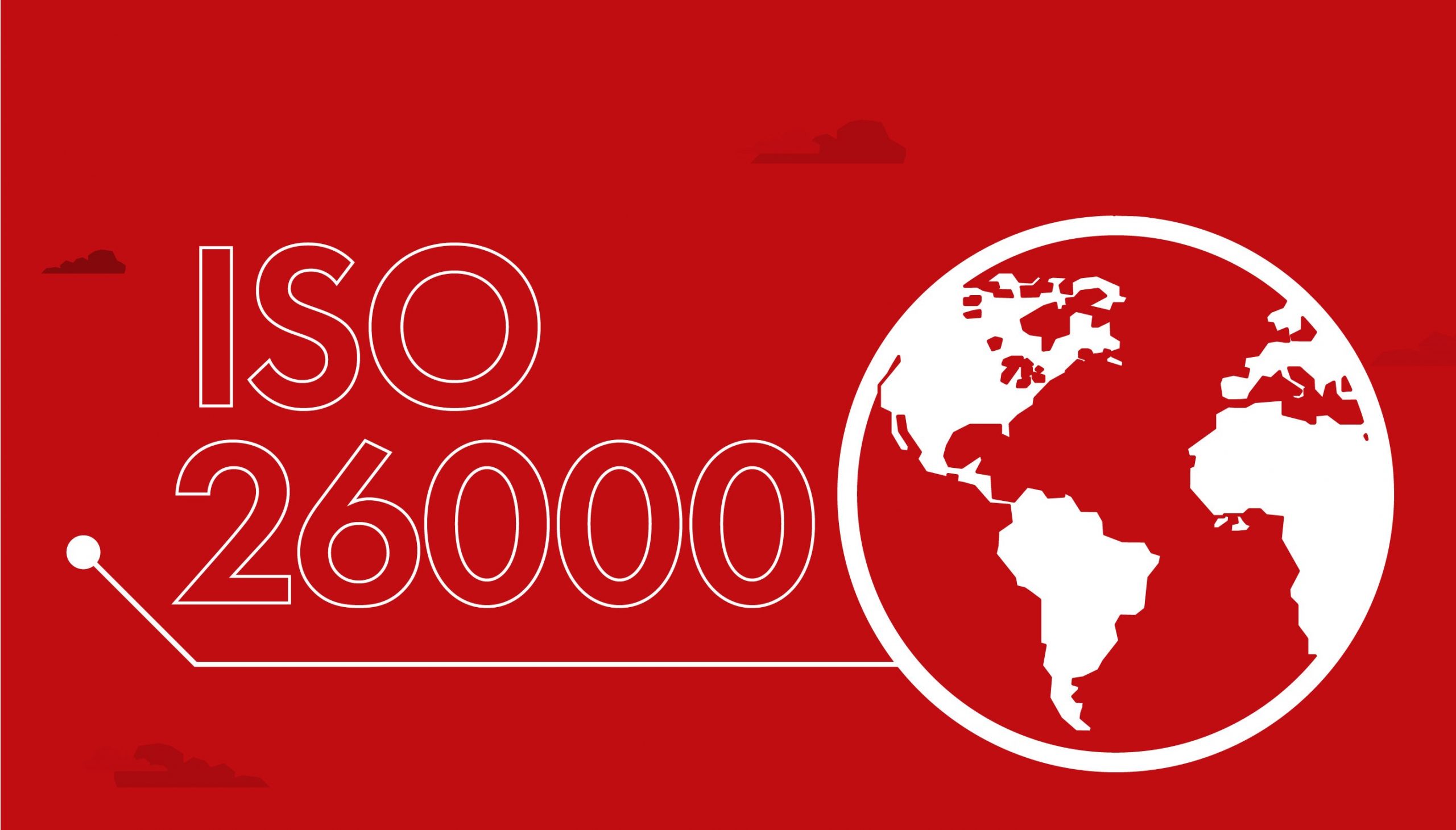
Understanding ISO 26000: The International Standard for Social Responsibility
24th Aug, 2023
In today’s global landscape, organizations worldwide are increasingly recognizing the necessity and advantages of embracing socially responsible behavior. The objective of social responsibility is to make meaningful contributions to sustainable development. A company’s dedication to the well-being of society and the environment has now become a pivotal factor in evaluating its overall performance and its ability to operate effectively in the long term. This shift in perspective reflects the growing realization that we must prioritize the preservation of healthy ecosystems, social equity, and sound organizational governance. Ultimately, the success of any organization relies on the vitality of the world’s ecosystems. In this era, organizations are under heightened scrutiny from their diverse stakeholders, who demand transparency and accountability in their actions.
.
What is ISO 26000?
ISO 26000 is an international standard that provides guidance on social responsibility. Published by the International Organization for Standardization (ISO), ISO 26000 offers organizations recommendations and best practices for integrating social responsibility into their operations, decision-making processes, and relationships with stakeholders.
ISO 26000 aims to encourage organizations to take a proactive approach to social responsibility, going beyond legal compliance and addressing the wider societal impact of their activities.
ISO 26000 is designed to complement other ISO management system standards, such as ISO 9001 (Quality Management) and ISO 14001 (Environmental Management). Organizations can integrate social responsibility considerations into their existing management systems using ISO 26000 as a framework.
By following the principles and recommendations outlined in ISO 26000, organizations can enhance their social responsibility performance, contribute positively to society and the environment, and build trust with their stakeholders.
.
Who can use ISO 26000?
ISO 26000 is applicable to all types of organizations, regardless of their size, sector, or location. It recognizes that social responsibility practices may vary based on the organization’s context and encourages flexibility in implementing the guidance.
It’s important to note that ISO 26000 is not a certifiable standard like some other ISO standards. It provides guidance rather than certification requirements. Organizations can use ISO 26000 as a reference to develop and improve their social responsibility practices, align with international expectations, and demonstrate their commitment to sustainable and ethical business practices.
ISO 26000 can be used by any organization, for example weather its large multi-national corporations or small and medium size enterprises, the public sector (hospitals, schools or others), foundations, charities and NGOs, extractive industries, such as mining and fossil fuel companies, service and financial industries (banks, IT, insurance), municipal governments, farmers and agribusiness ,consultancies.
.
Key Principles of ISO 26000: Guiding Sustainable and Responsible Practices
The key principles of ISO 26000, which provides guidance on social responsibility, are as follows:
- Accountability: Organizations take responsibility for their impacts, considering consequences and addressing negative effects.
- Ethical Behavior: Upholding integrity, fairness, and societal norms, organizations avoid practices that harm stakeholders or society.
- Transparency: Organizations communicate and make decisions transparently, providing accurate information and being responsive to stakeholder feedback.
- Respect for Stakeholder Interests: Organizations consider and respect stakeholder interests, engaging in dialogue, involving them in decision-making, and considering their perspectives.
- Respect for the Rule of Law: Organizations comply with laws, regulations, and international standards, ensuring responsible and lawful operations.
- Respect for International Norms: Organizations support international norms and guidelines for social responsibility, contributing to global sustainability and development.
- Respect for Human Rights: Organizations uphold and promote internationally recognized human rights, avoiding complicity in abuses and addressing adverse impacts.
These principles guide organizations in integrating social responsibility into policies, practices, and decision-making, fostering sustainable and ethical business practices.
.
Benefits of ISO 26000 Implementation:
ISO 26000 offers numerous benefits to organizations that adopt and implement its principles of social responsibility. These benefits include:
- Enhanced Reputation: ISO 26000 helps organizations enhance their reputation and credibility among stakeholders, including customers, investors, employees, and the public.
- Stakeholder Engagement: ISO 26000 encourages organizations to engage with stakeholders, considering their interests and concerns. This fosters better relationships and understanding, leading to increased trust and support from stakeholders.
- Improved Risk Management: ISO 26000 helps organizations identify and manage potential risks more effectively by considering social, environmental, and ethical aspects. This enables proactive measures to address risks related to reputation, legal compliance, supply chain issues, and other social impacts.
- Sustainable Business Practices: ISO 26000 promotes sustainability by guiding organizations to consider the long-term impacts of their decisions and activities. This helps minimize negative environmental and social effects and contributes to the well-being of society.
- Employee Engagement and Satisfaction: Embracing social responsibility can contribute to a positive organizational culture. Employees often find meaning and purpose in working for socially responsible organizations, leading to increased engagement, job satisfaction, and loyalty.
- Innovation and Competitive Advantage: ISO 26000 encourages organizations to explore innovative solutions and practices aligned with social responsibility principles. This can drive product and service innovation, differentiation, and a competitive advantage in the marketplace.
- Compliance with International Standards: Adopting ISO 26000 demonstrates a commitment to meeting global expectations and can facilitate compliance with legal and regulatory requirements.
- Contribution to Sustainable Development Goals: ISO 26000 aligns with the United Nations’ Sustainable Development Goals (SDGs) and provides a framework for organizations to contribute to achieving these global objectives. This helps organizations demonstrate their social and environmental impact and contribute to a more sustainable world.
By embracing ISO 26000, organizations can realize these benefits and effectively integrate social responsibility into their operations, leading to positive outcomes for both the organization and society as a whole.
.
7 Core subjects of ISO 26000:
Here is the List of Issues for all of the 7 Core Subjects. Each issue has a definition and description, followed by a list of related actions and expectations given in the ISO 26000 Standard.
- Organizational governance
- Human Rights
- Labor Practices
- Environments
- Fair Operating Practices
- Consumer Issues
- Community involvement and development
These seven fundamental areas offer businesses a comprehensive framework for looking at and addressing their social responsibility on a variety of levels. These topics can be used by organizations to pinpoint pertinent problems, establish objectives, and create plans of action that support their social responsibility obligations.
.
Measuring and Reporting Social Responsibility:
Although ISO 26000 offers recommendations on social responsibility, it does not contain any specific instructions for social responsibility reporting. However, organizations have the option to adopt a reporting procedure to inform stakeholders of their performance and social responsibility activities. An ISO 26000-compliant reporting procedure for social responsibility is provided below:
- Find relevant subjects: Identify the important social responsibility related issues and subjects that are important to your organization and its constituents. This could include areas such as environmental impact, human rights, labor practices, community involvement, and ethical business conduct.
- Establish a reporting structure: Organization can use reporting such as the Global Reporting Initiative (GRI) Standards, the Integrated Reporting structure, or the Sustainability Accounting Standards Board (SASB) recommendations that complies with ISO 26000.
- Collect Information: Compile important facts and figures on the identified social responsibility subjects. Gather data from various departments, engaging stakeholders, conducting surveys, audits, and receiving third-party evaluations. Ensure the dependability, accuracy, and totality of the data.
- Set Performance Indicators: Define key performance indicators (KPIs) or metrics that will help measure and monitor your organization’s social responsibility performance.
- Report Preparation: Prepare a comprehensive social responsibility report that provides relevant information on your organization’s social responsibility efforts, initiatives, performance, and impacts.
- Engage Stakeholders: Engage with your stakeholders throughout the reporting process. This can be done through stakeholder consultations, surveys, focus groups, or other engagement methods.
- Review and Assurance: Conduct an internal review or seek external assurance to ensure the accuracy, completeness, and credibility of the social responsibility report.
- Publish and Communicate: Publish the social responsibility report in a timely manner and make it easily accessible to stakeholders through your organization’s website, annual reports, or dedicated sustainability reports.
- Continuous Improvement: Use the insights and feedback gathered during the reporting process to drive continuous improvement in your organization’s social responsibility practices.
The reporting process may vary depending on the size, nature, and industry of your organization.
.
How 4C can help your Organization with Social Responsibility Certification?
Our skilled consultant team at 4C can help you with all the necessary steps to grow your business and guide you through the implementation process. Having served 100+ clients to get their organization certified for Social Responsibility Standards, with 1800+ hours of training, 4C has a rich experience and the much-needed competence to help your organization get Social Responsibility Certification seamlessly. To know more about how you can strengthen your organization with Social Responsibility and its Standards, Contact us now.
